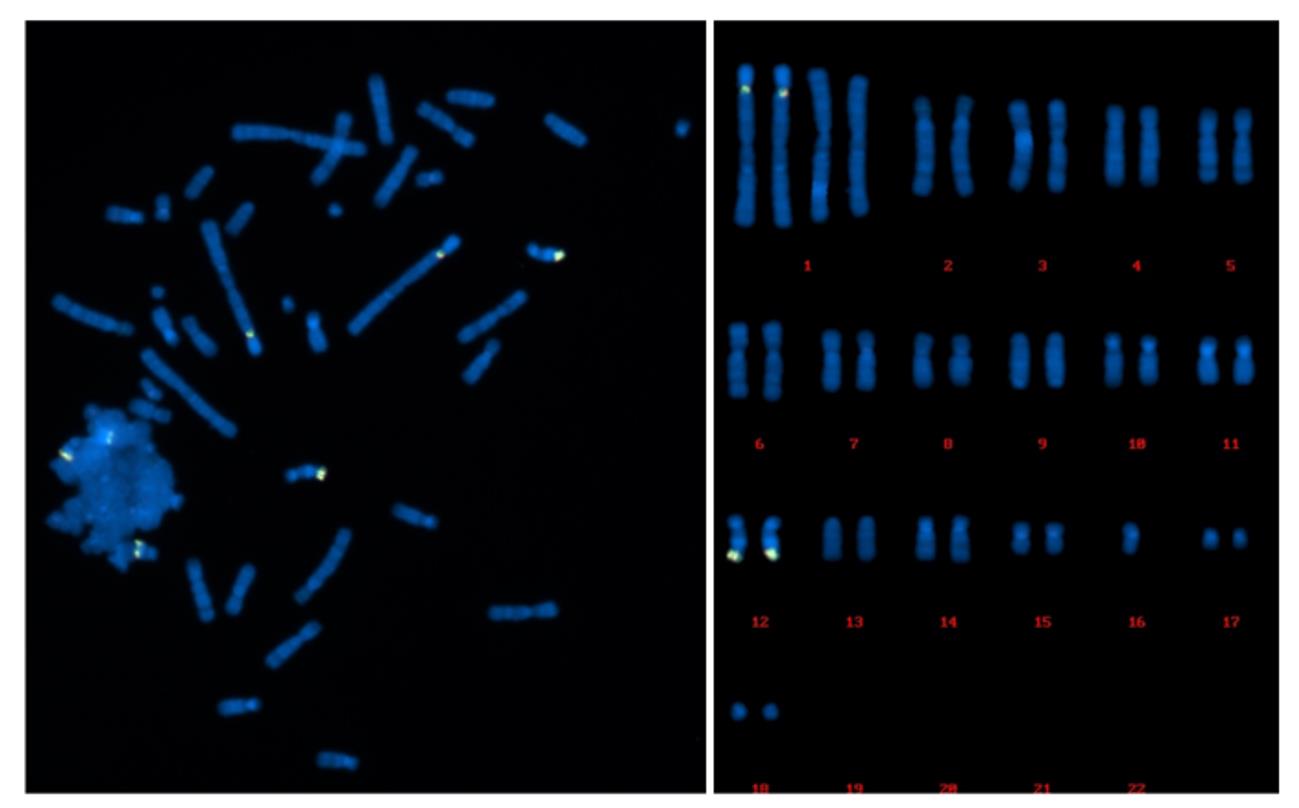CHO Cell Line Transgene Integrations QC (FISH)
Chinese hamster ovary (CHO)- derived cell lines have become the predominant host for the manufacturing of therapeutic recombinant proteins. Genetic
stability includes the testing of cell banks at the level of the Master, Working and End of Production Cell to ensure that the genetic insert is stable. One
of the genetic stability tests is the transgene integrity, which is a key component in characterizing CHO production cell banks and is critical in
maintaining quality assurance of biologicals.
For recombinant CHO cell lines generated via many methods, the integration site is random and, in most cases, not known. Integration of the transgene can
disrupt an endogenous gene, potentially interfering with interpretation of the phenotype. Fluorescence in situ hybridization (FISH) is a powerful technique
that can be used to visualize transgene integration sites and provide a better understanding of transgene behavior. With many years of experience and
in-depth knowledge, Creative Bioarray can use FISH method to confirm the integration of transgenes and determine their chromosome band location. We
guarantee the speed, quality and cost of our service.
 Figure 1. FISH detection of transgene using plasmid probes on CHO metaphase chromosome.
Figure 1. FISH detection of transgene using plasmid probes on CHO metaphase chromosome.
According to ICH Q5B and Q5D guidelines, regulating agencies request that cell substrates must be analyzed at two time points (i.e., on the level of the
Master Cell Bank and on the level of the End of Production cells) to show their genetic stability. Typical assays include those intended to
confirm the integrity of the transgene transcript, the genome structure at integration site, and the ratio of insert gene copy number.
Features of Creative Bioarray's CHO Cell Line Transgene Integrations QC (FISH) Service
- cDNA (2kb~) or genomic DNA fragment on banded chromosomes
- Confirm the integration of transgenes
- Visualize chromosome band location
- In accordance with ICH Q5B and Q5D guidelines
- Reporting meeting regulatory requirements
- Fast turnaround time
Deliverable
- Full scope support service-from sample preparation through to the final report
- Detailed report of insertion and transgene position
- Expert interpretation specific to a new transgenic line
Project Timeline

Quotation and ordering
Our customer service representatives are available 24hr a day! We thank you for considering Creative Bioarray as your CHO Cell Line Transgene Integrations
QC (FISH) Service partner.
References
-
ICH Q5B, Quality of Biotechnological Products: Analysis of the Expression Construct in Cells used for Production of R-DNA Derived Protein Products, Step
4 version (1995).
- Wurm, Florian M., and Maria João Wurm. "Cloning of CHO cells, productivity and genetic stability—a discussion." Processes 5.2 (2017): 20.
-
Plavsic, Mark. "Q5D derivation and characterization of cell substrates used for production of biotechnological/biological products." ICH
Quality Guidelines (2017): 375-393.
- Galbraith, Daniel. "ICH Q5A: Viral Safety of Biotechnology Products." ICH Quality Guidelines: An Implementation Guide (2017): 311-335.
-
Krebs, Lara E., et al. "Effective and efficient characterization of Chinese hamster ovary production cell lines using automated intracellular
staining and statistical modeling." Biotechnology Progress 34.3 (2018): 570-583.
-
Welch, J. (2017). Tilting at clones: A regulatory perspective on the importance of "Clonality" of mammalian cell banks. CDER/OPQ/OBP/DBRRIV
April 24, 2017.
-
Paul Wu, et al. "Tools and methods for providing assurance of clonality for legacy cell lines" in "Cell Culture Engineering XVI", A.
Robinson, PhD, Tulane University R. Venkat, PhD, MedImmune E. Schaefer, ScD, J&J Janssen Eds, ECI Symposium Series, (2018).
-
Frye, Christopher, et al. "Industry view on the relative importance of "clonality" of biopharmaceutical-producing cell lines."
Biologicals 44.2 (2016): 117-122.
All products and services on this website are only suitable for non-medical purposes.


 Figure 1. FISH detection of transgene using plasmid probes on CHO metaphase chromosome.
Figure 1. FISH detection of transgene using plasmid probes on CHO metaphase chromosome.




